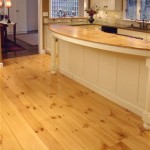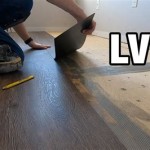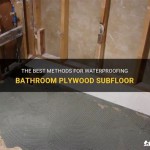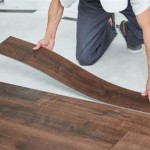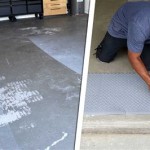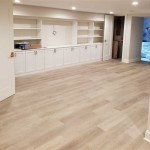Unlocking The Creative Potential Of Playground Flooring Systems
Playground flooring systems are often perceived as functional necessities, primarily focused on safety and accessibility. While these aspects are undoubtedly crucial, the potential of playground flooring to contribute significantly to the creative and developmental experiences of children is frequently underestimated. Integrating innovative design and materials can transform a simple playground surface into a vibrant, imaginative landscape, fostering creativity, problem-solving skills, and physical activity.
Traditionally, playground flooring choices were limited to basic rubber mats or poured-in-place rubber surfaces, often featuring minimal color variation. While these materials offered protection against falls, they lacked the visual stimulation and tactile diversity necessary to engage children's imaginations fully. Modern playground flooring systems, however, offer a much wider range of options, including synthetic turf, engineered wood fiber, and a variety of rubber surfacing products in diverse colors, textures, and patterns. This increased versatility allows designers to create playgrounds that are not only safe and accessible but also visually stimulating and conducive to creative play.
The strategic use of color in playground flooring can significantly impact children's engagement and imaginative play. Bright, vibrant colors can energize and excite, encouraging active play and exploration. Conversely, softer, more muted tones can create a sense of calm and tranquility, fostering quieter, more reflective activities. Incorporating different colors to delineate play zones or create pathways can also enhance spatial awareness and encourage children to navigate the playground in different ways. Furthermore, specific colors can be used to represent elements of nature, such as blue for water or green for grass, further stimulating children's imaginations and connecting them to the natural world.
Beyond color, the texture of playground flooring can also play a crucial role in stimulating children's senses and encouraging imaginative play. Different textures can provide tactile feedback, enhancing sensory exploration and helping children develop their fine motor skills. For example, a section of textured rubber surfacing could simulate the feel of sand or pebbles, while a patch of synthetic turf could provide a soft, grassy surface for rolling and tumbling. Integrating different textures into the playground flooring design can create a multi-sensory environment that is both engaging and educational.
Enhancing Imaginative Play Through Design Elements
The incorporation of specific design elements into playground flooring systems can significantly enhance imaginative play. Consider, for example, embedding shapes, numbers, or letters into the flooring surface. These elements can be used to create interactive games, educational activities, or simply to spark children's curiosity and encourage them to explore the playground in new ways. A hopscotch grid embedded in the flooring provides a classic game, while a series of letters could be used to create a word search puzzle. Similarly, incorporating images of animals, plants, or other natural elements can transform the playground into a miniature ecosystem, inspiring children to create their own stories and scenarios.
The use of geometric patterns in playground flooring can also stimulate creativity and problem-solving skills. Complex patterns can challenge children to identify relationships, predict outcomes, and develop spatial reasoning. These patterns can be created using different colors, textures, or materials, further enhancing the visual and tactile appeal of the playground. Furthermore, the integration of ramps, mounds, and other topographical features into the playground flooring design can create a more dynamic and engaging play environment. These features can encourage children to explore different levels, develop their gross motor skills, and engage in imaginative play scenarios involving climbing, sliding, and exploring.
The flexibility of modern playground flooring systems allows for the creation of custom designs that reflect the unique needs and interests of the community. A school playground, for example, could incorporate elements related to the school's mascot, colors, or academic focus. A community park playground could feature designs that celebrate the local history, culture, or natural environment. By tailoring the playground flooring design to the specific context, designers can create a space that is not only safe and functional but also meaningful and engaging for the children who use it.
Promoting Physical Activity and Movement
While safety and imaginative play are paramount, playground flooring systems can also be designed to promote physical activity and movement. The strategic use of color, texture, and design elements can encourage children to engage in a variety of physical activities, such as running, jumping, climbing, and balancing. For example, a brightly colored pathway could encourage children to run from one end of the playground to the other, while a series of strategically placed mounds and ramps could provide opportunities for climbing and sliding. Incorporating interactive features, such as touch-sensitive lighting or sound effects, can further enhance the physical activity experience, making it more engaging and rewarding.
The selection of appropriate flooring materials can also contribute to promoting physical activity. Synthetic turf, for example, provides a soft and resilient surface that is ideal for running, jumping, and tumbling. Rubber surfacing, on the other hand, offers excellent shock absorption, reducing the risk of injuries from falls. By carefully considering the physical properties of different flooring materials, designers can create a playground that is both safe and conducive to active play. Furthermore, the integration of different flooring materials can create a varied and challenging play environment, encouraging children to explore different types of movement and develop their physical skills.
The layout of the playground and the placement of play equipment can also influence the level of physical activity. Creating a circuit of interconnected play areas can encourage children to move continuously from one activity to the next. Placing challenging play equipment, such as climbing structures or rope bridges, strategically throughout the playground can encourage children to develop their strength, coordination, and balance. By carefully considering the overall design of the playground, designers can create a space that is both fun and physically stimulating.
Ensuring Safety and Accessibility
While creativity and physical activity are important considerations, safety remains the paramount concern in playground design. Playground flooring systems play a crucial role in mitigating the risk of injuries from falls, providing a soft and resilient surface that absorbs impact. The selection of appropriate flooring materials and the proper installation of the flooring system are essential to ensuring the safety of children. It is crucial to adhere to relevant safety standards and guidelines, such as those established by the Consumer Product Safety Commission (CPSC) and the American Society for Testing and Materials (ASTM).
The fall height of play equipment is a key factor in determining the required thickness of the playground flooring. Fall height refers to the vertical distance between the highest designated play surface on the equipment and the ground. The flooring system must be thick enough to provide adequate shock absorption for falls from that height. It is also important to consider the age and developmental abilities of the children who will be using the playground. Younger children may require thicker flooring than older children, as they are more prone to falls and have less developed motor skills.
Accessibility is another crucial consideration in playground design. The Americans with Disabilities Act (ADA) requires that playgrounds be accessible to children with disabilities. This includes providing accessible routes to and from the playground, as well as accessible play equipment and flooring surfaces. Playground flooring systems can be made accessible by using materials that are firm, stable, and slip-resistant. Poured-in-place rubber surfacing is a popular choice for accessible playgrounds, as it provides a smooth, seamless surface that is easy for wheelchairs and other mobility devices to navigate. Synthetic turf can also be made accessible by using a dense, low-pile variety that is stable and slip-resistant. It is important to consult with accessibility experts to ensure that the playground flooring system meets all relevant accessibility standards.
In conclusion, playground flooring systems are much more than just a safety surface. They represent a significant opportunity to enhance the creative and developmental experiences of children. By incorporating innovative design elements, diverse materials, and a focus on safety and accessibility, playground flooring can be transformed into a vibrant and engaging landscape that fosters imagination, physical activity, and learning.

How To Create Play Spaces That Stimulate Learning Miracle Recreation

How To Create Play Spaces That Stimulate Learning Miracle Recreation

Simple Natural Playground Ideas For Preschool Fostering Holistic Growth

How To Create Play Spaces That Stimulate Learning Miracle Recreation

Funplay Innovation Kidsfun Playgrounddesign Playandlearn Fun Play Systems Pvt Ltd

Unlocking Child Development Power Of Inclusive Playgrounds

How To Create Play Spaces That Stimulate Learning Miracle Recreation

How To Create Play Spaces That Stimulate Learning Miracle Recreation

S Imagination Playground

Unlocking Child Development Power Of Inclusive Playgrounds
See Also


